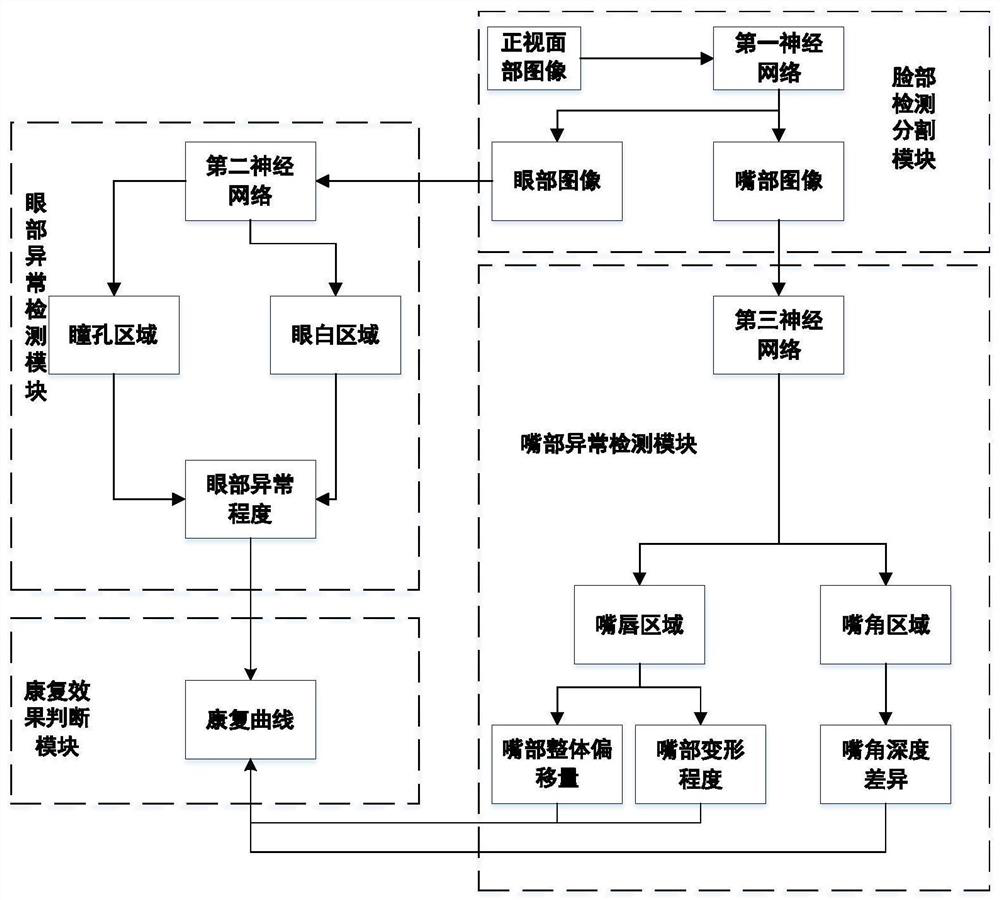Computer vision-based facial nerve disease rehabilitation condition static detection system
A computer vision and facial nerve technology, applied in the field of computer vision, can solve problems such as large error accumulation and misjudgment, and achieve the effect of small error, low computing performance requirements, and low power consumption
- Summary
- Abstract
- Description
- Claims
- Application Information
AI Technical Summary
Problems solved by technology
Method used
Image
Examples
Embodiment
[0025] Collect a single frame of frontal facial image of the patient, send the frontal facial image to the face detection and segmentation module, and obtain the eye image and mouth image, specifically:
[0026] Use the first neural network to process the collected patient's frontal facial image to obtain the eye mask and mouth mask. The first neural network is in the form of an Encoder-Decoder, the input is the frontal facial image, and the output is the segmented image corresponding to the face ; The first neural network includes a first encoder and a first decoder, and the first encoder first encodes the front-view facial image, that is, uses convolution and pooling operations to extract the image in the process of downsampling the image. The output is the extracted feature vector; the first decoder decodes the feature vector, that is, restores the feature vector to the corresponding single-channel segmented image through deconvolution and anti-pooling operations.
[0027] ...
PUM
 Login to View More
Login to View More Abstract
Description
Claims
Application Information
 Login to View More
Login to View More - R&D
- Intellectual Property
- Life Sciences
- Materials
- Tech Scout
- Unparalleled Data Quality
- Higher Quality Content
- 60% Fewer Hallucinations
Browse by: Latest US Patents, China's latest patents, Technical Efficacy Thesaurus, Application Domain, Technology Topic, Popular Technical Reports.
© 2025 PatSnap. All rights reserved.Legal|Privacy policy|Modern Slavery Act Transparency Statement|Sitemap|About US| Contact US: help@patsnap.com

